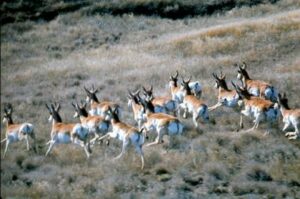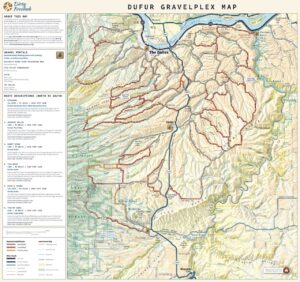 As gravel cyclists, we think our impact on wildlife is minimal to none. That is not always the case! Even though we may not see the wildlife, they may see, hear or smell us, all resulting in an increase in their awareness and anxiety level. But, we can take steps to minimize this impact.
As gravel cyclists, we think our impact on wildlife is minimal to none. That is not always the case! Even though we may not see the wildlife, they may see, hear or smell us, all resulting in an increase in their awareness and anxiety level. But, we can take steps to minimize this impact.
The most important things you can do:
- Understand that you do have an impact on wildlife when riding.
- When encountering big game animals (deer, elk, bear, mountain lions, wolves), stop and put a foot down. Wait! and wait some more! As soon as you stop riding, the big game animal will feel that it is no longer being chased. When you stop, most likely, what will happen is that the animal will continue to run for a bit, stop, turn and look at you, observe you, and then wander off. This observation period may last for 5 to 10 minutes. Be patient. After the animal wanders off, wait for another 5 to 10 minutes and then proceed. Proceed as a group at slow to moderate speed and sing at moderate volume until you are several hundred yards clear of the encounter site.
- Ride together as a group, don’t disperse! From last person to first person, there should be no more than 100 yards of separation. This usually means keeping your group size small, like 4 or fewer riders.
Podcast. Listen in as we talk with Amy Stuart who has worked for the Oregon Department of Fish and Wildlife for 30 years. Learn about the impact we have as cyclists and what we can do to mitigate that impact.
Podcast. We continue the conversation with Lauri Turner and Brock McCormick who are both Wildlife Bioligists with the Deschutes National Forest Service in Central Oregon.
Podcast. What should I do if encounter wildlife and I feel threatened or scared?
Additional things to consider:
- Keep your group together. Limit group separation to 100 yards or less.
- Limit your noise. Use something between your library voice and conversational voice. Do not whoop, holler, and yell.
- Avoid recreating at dawn/dusk or in the dark when wildlife are most active.
- Be extra careful not to disturb wildlife during vulnerable times of year – including winter (when food resources may be scarce) or when animals may be pregnant, lactating or caring for their young;
- Wear clothing that blends into the natural surroundings.
- Do not bring your dog with you. Dogs have a significant and detrimental impact on wildlife. If you cannot leave your dog behind, a leashed dog will be less impactful than an unleashed dog.
- Stay on system roads and trails – do not build or use user-created routes.
- Obey seasonal closures;
- Put in the effort to find reliable, good road/trail information (i.e., use the Dirty Freehub route guides and make a comment after you ride a route. This is super helpful.
- Understand that all recreation uses have impacts (we all recreate in glass houses!).Be responsible for lessening your own impact.
- Recreate with a conservation mindset – if you value and enjoy nature, bring those personal values forward into your recreation behaviors.
- Talk to your friends and family about responsible recreation. Set a good example for visitors about our responsible recreation values so they can bring the message back home to their communities;
- Connect with your surroundings – Don’t be afraid to go slow. You will notice more and be less likely to surprise wildlife;
- Educate yourself on local wildlife – know you are recreating in a wild landscape – be prepared, know what to expect and how to act appropriately;
- Leave no trace, or better yet: Leave it better than you found it.

